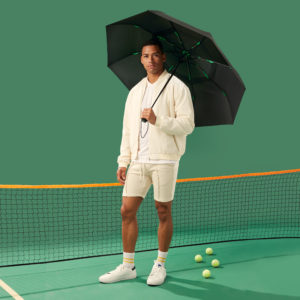How To Transition Your Wardrobe for Spring While Staying Warm
It’s safe to say we’re all ready to leave winter behind and get on with spring. Unfortunately, the weather doesn’t seem to have gotten the memo just yet.
We’ve already experienced snow in March, and not knowing whether you’re going to need sandals or snow boots the next day can make transitioning your wardrobe for spring less than simple. So, here are our top style tips to keep you warm in the coming season.
Feeling inspired? Take a look at our birdcage umbrellas now or check out our blog for other fashion, travel, and lifestyle tips to help you enjoy the soon-to-be warmer weather.
1. Put your winter wardrobe away
It’s always a good idea to regularly spring-clean your wardrobe. It gives you the chance to rediscover garments that you may have forgotten or let go of something you haven’t worn in years. When you’re transitioning your wardrobe for spring, start by putting away all the pieces that can’t be transitioned – it will give an instant refresh and help you mentally say goodbye to winter.
2. Layer up
It might be time to put away the puffy, fluffy winter coats in favour of lighter and brighter coats and jackets. Ones that are more suited to the warmer weather, like denim, leather, or bomber jackets. Don’t forget to also keep one of our designer umbrellas handy for when those spring showers come pouring in .
Make sure to stay warm by layering pieces – it’s probably the most useful way to dress when the temperature outside is Baltic one minute and balmy the next. For example, instead of wearing a chunky knit, try wearing a lighter jumper or cardigan with a vest, shirt or blouse underneath. Focus on lighter pieces that can easily be swapped out or cast off depending on the forecast.
3. Add spring accessories
Now’s also the time to think about swapping out some of your accessories for spring-appropriate versions.
If you’re not quite ready to let go of the cosy, enveloping winter scarfs but want a change, switch to a cotton or chiffon number. Lighter, flowy scarves can keep off the chill whilst also being more breathable than those thick, winter scarves. Your trusty bobble hat may then become a beanie or a beret to keep your head warm without making your look too wintery.
When it comes to footwear, the weather might not be quite good enough for flats, trainers or pumps – after all the last thing you want is to get cold or wet feet throughout your day! In this case, try pairing your spring dresses or skirts with ankle or calf boots to get the best of both worlds. Don’t be afraid to bring out your sunglasses on those brighter days either. They’ll give your eyes a break whilst instantly making your outfit a touch more summery.
And of course, don’t forget to keep yourself prepared for any weather with an umbrella.
For springtime, we love our birdcage umbrellas . Whether you’re looking for fresh florals or bright, block-coloured borders, we’ve got a wide variety of colours and patterns to choose from to help you feel ready for the new season.
4. Switch to spring colours and patterns
In the cold, dark winter months it’s easy to stick to darker and richer colours or neutrals that help you feel warm and cosy. There’s also room for the occasional sparkle for all those seasonal parties.
As spring approaches, it’s time to ditch these in favour of a lighter, fresher colour palette.
Greens, yellows and blues give off feelings of shooting bulbs, daffodils, sunshine, and clear skies – perfect for the changing season. In a similar vein, try adding patterns inspired by the natural world, like animal prints, florals, and foliage to capture that feeling of renewal and reawakening. If you want a more vibrant outfit, try out the bolder shades of crimson, peach and orange that were seen at London Fashion Week.
Your accessories are a great way to add pops of colour or patterns to your overall look. And bringing in lighter colours whilst following the styling tips listed above will help you feel brighter and ready for spring’s sunny days as well as the occasional spells of bad weather.

